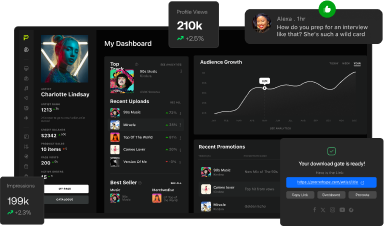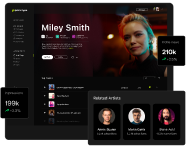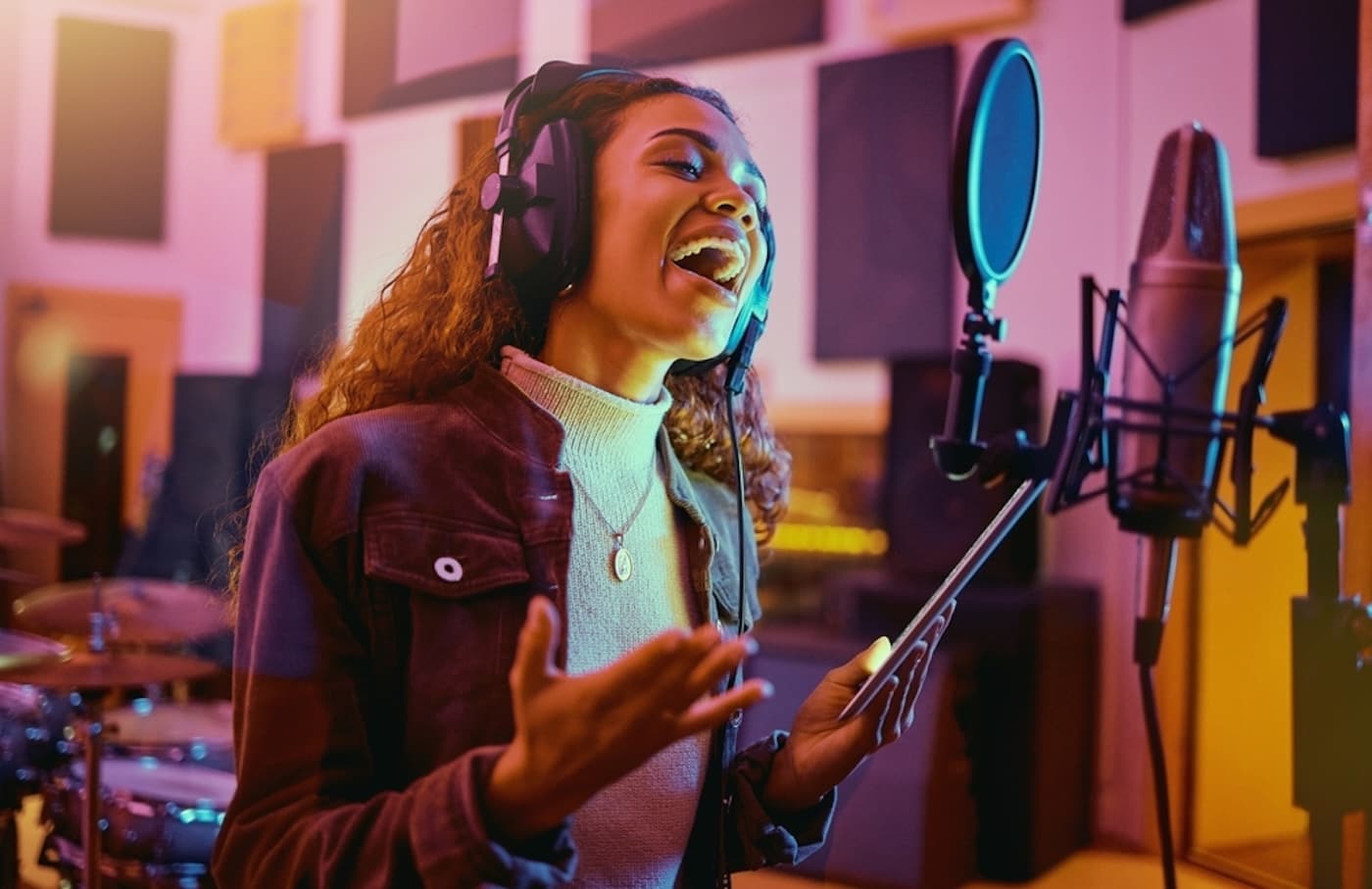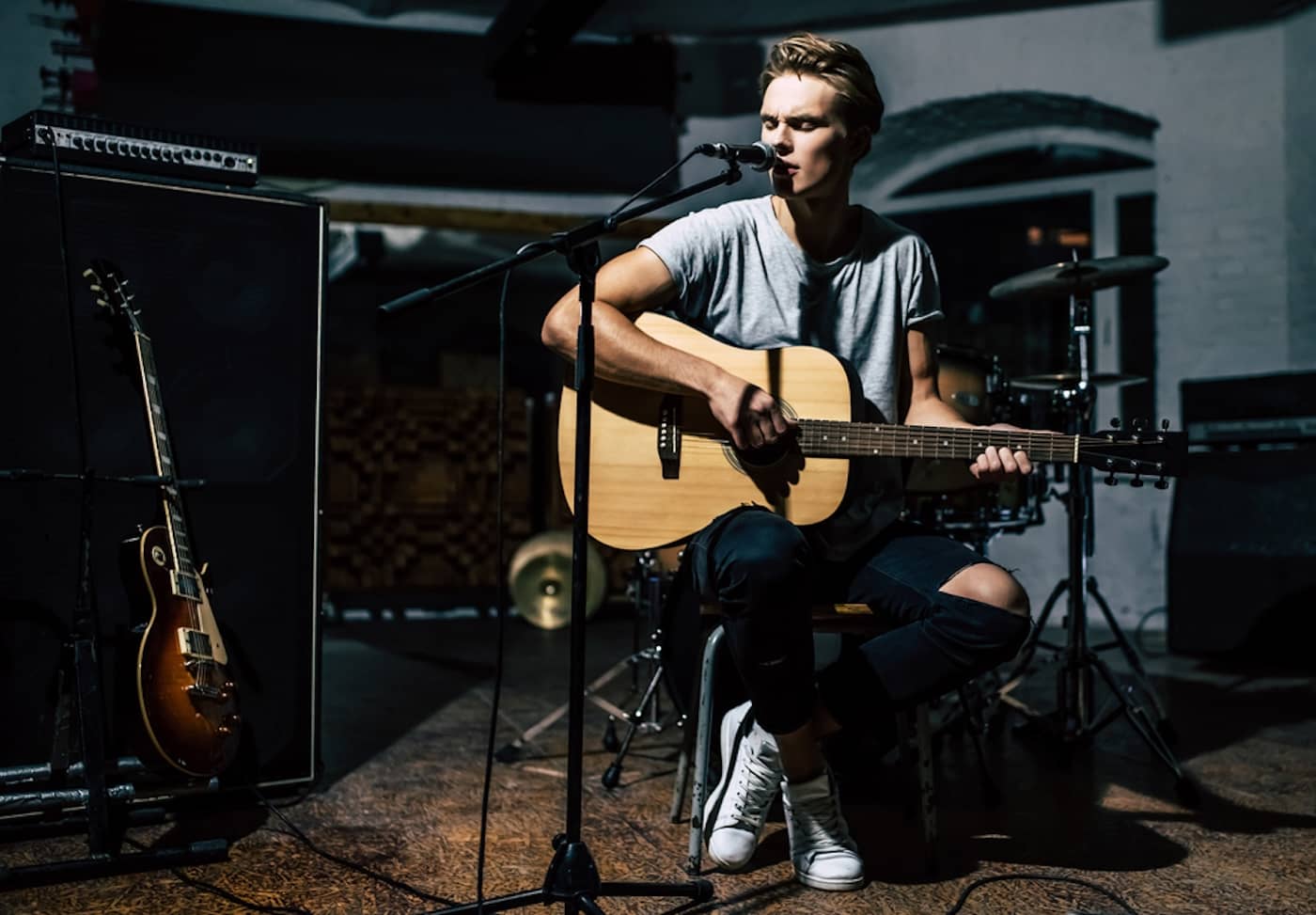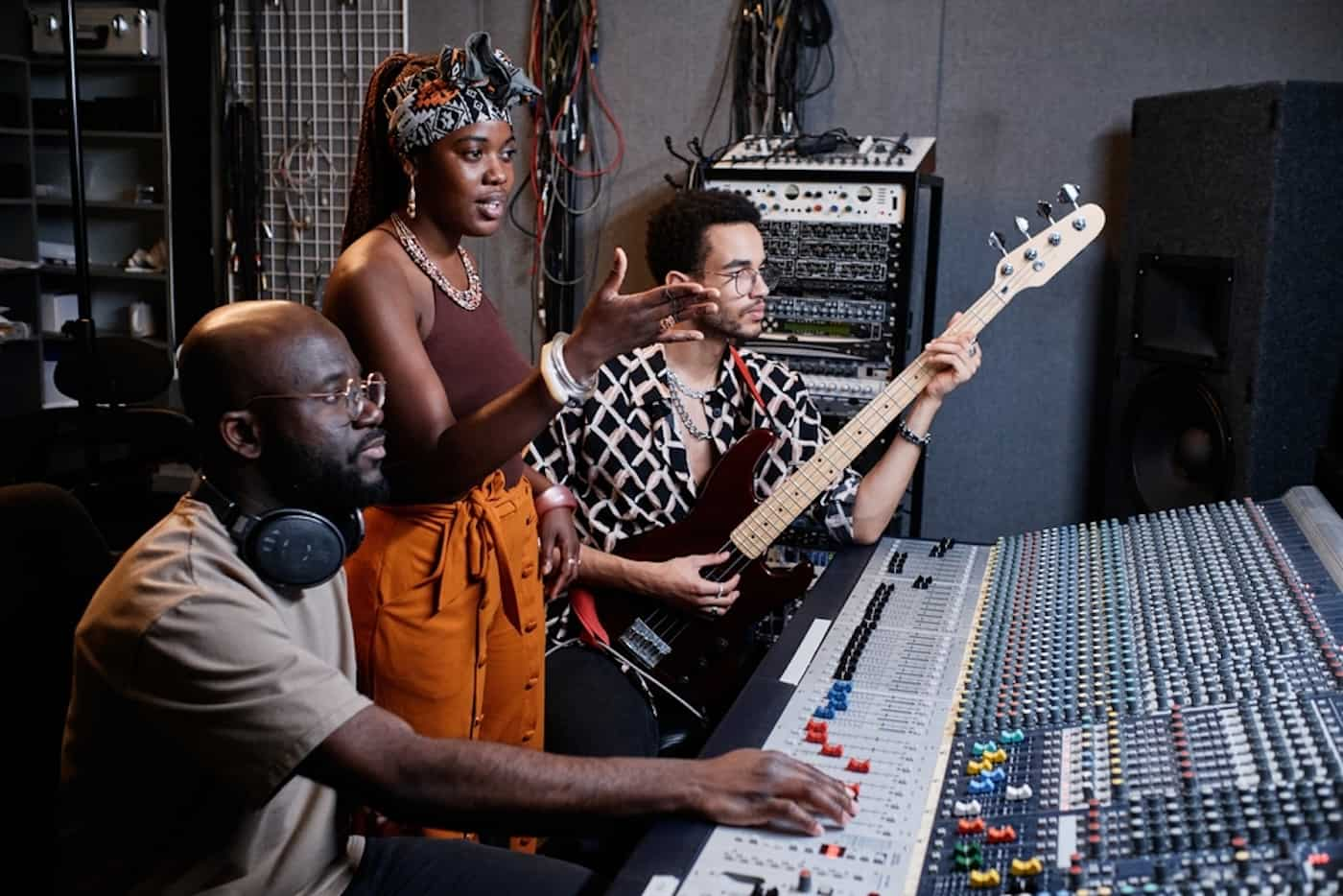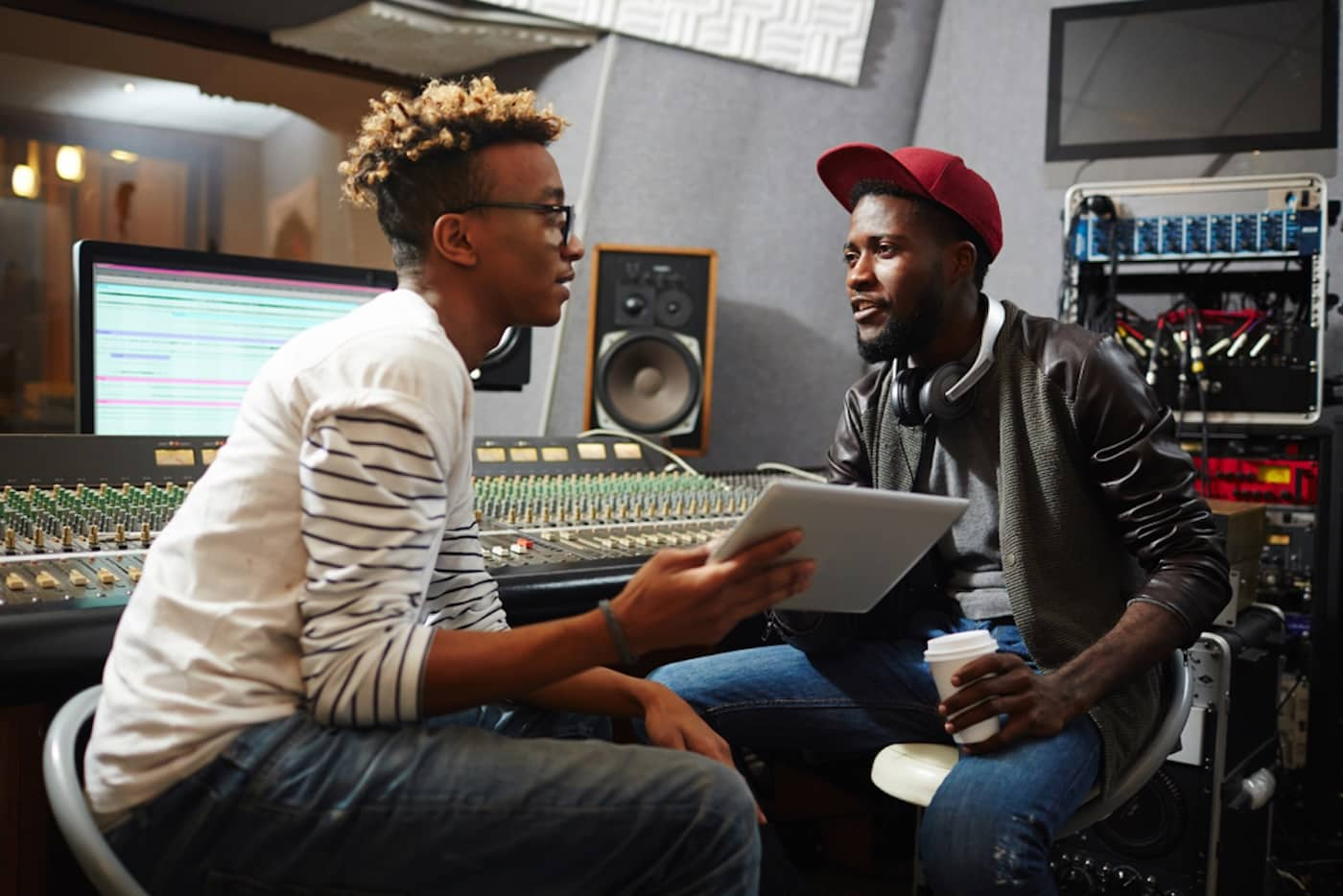
Performance royalties are a popular source of revenue in the music industry, allowing artists to earn money for their creative works.
Learning how to claim performance royalties ensures consistent revenue from radio stations, streaming services, and other platforms.
This guide covers everything you need to know about performance royalties, from how they work to helpful resources for collecting money.
Get Early Access
To Promo Hype
What Are Performance Royalties?
Performance royalties are a subcategory of music royalties that deliver payments based on the public performance of musical compositions.
Public performance fees are paid to songwriters and publishers whenever songs are played in the following situations:
- Broadcasts: Broadcast music platforms, including terrestrial radio stations and television shows, are eligible for public performance royalties.
- Interactive digital streams: Music users on Spotify, Apple Music, and other streaming services boost performance fees whenever they listen to a song on these platforms.
- Non-interactive streaming services: Additionally, royalties are paid whenever music is engaged with on platforms such as Pandora and digital radio stations.
- Live performance in venues: Performance royalties cover a range of venues, including bars, restaurants, clubs, festivals, and performances at concerts.
- Miscellaneous public uses: The use of songs as background music in shopping centres or waiting rooms can also be used to collect royalties.
Understanding how performance royalties are generated allows artists to make music that generates a consistent revenue stream.
How Do Performance Royalties Work?
Performance royalties generated based on the different sources outlined above are collected and distributed to composition copyright holders.
This is typically the original songwriter or publisher, depending on any arrangement between these parties, often with royalties being split.
Overseeing the collection of royalties are Performing Rights Organizations (PROs), with different organizations in various countries.
By acting as intermediaries, these organizations can track performances across various outlets and calculate the royalties generated.
Several factors can influence the royalties paid, including the type of performance, how popular a song is, and the duration of play.
As such, anyone looking to make money as a music producer must evaluate their options to ensure optimal compensation for their work.
Read more: How to build a home recording studio.
Performance Royalties Vs. Mechanical Royalties
While performance royalties are essential for generating income, other models, like mechanical royalties, are also necessary to address.
Understanding the differences between mechanical royalties and performance royalties allows artists to maximize their revenue.
The core distinction between the two approaches is how royalties are triggered, with mechanical royalties covering different sources.
Mechanical royalties paid are based on the following mechanisms:
- Sales of physical media: Each time a CD or vinyl record of a single, EP, or album is sold, mechanical royalties are available for properly registered work.
- Digital music downloads: Purchasing digital downloads on websites such as Beatport can also initiate mechanical royalties.
- Play on interactive streams: Representing a crossover with performance royalties, mechanical royalties can also be triggered through conventional streaming services.
Just as performance royalties have specific collection societies, so too do mechanical royalties use dedicated societies for revenue distribution.
Both, however, are paid to songwriters and publishers, allowing each approach to be combined to generate additional royalties.
How Music Copyright Impacts Performance Royalties
Understanding how copyright impacts performance royalties allows you to produce music that is eligible for revenue.
With many controversies arising due to a failure to register a composition, it’s vital to ensure you’re registered as the copyright holder.
Here’s how music copyright works concerning collecting royalties from public performances:
Composition Copyright
The composition copyright refers to the underlying musical piece, covering the lyrics, melody, and other arrangements.
As such, the copyright holder is typically the individuals who wrote the song, who earn money when it is performed live.
The composition copyright holder also has the power to license the use of their songs to other parties, such as for cover songs.
Master Copyright
Another key aspect of music publishing that affects royalties is who owns the master recording, which focuses on a specific sound recording.
The copyright for this uniquely produced version is held by recording artists and associated record labels, who earn various royalties from its use.
Master recording copyrights are also relevant to various licensing deals, such as synchronization licensing for use in a movie.
Learn more: How to record music at home.
Who Earns Performance Royalties?
Understanding how copyright impacts royalties from performances helps to break down exactly how royalties are paid.
Let’s explore these payment arrangements in more detail and how payments are often split between multiple recipients:
- Songwriting performance royalties: Songwriting performance royalties paid to performing artists and writers are commonly set at 50% of the overall royalties.
- Publishing royalties: In most arrangements, the additional 50% of paid royalties goes to the publisher’s share. The publisher may have a further agreement to share a portion of their percentage with the songwriter.
- Performing Rights Organizations memberships and fees: Membership of a PRO is necessary for collecting royalties, with one-off membership fees and other associated fees to be mindful of.
- Additional stakeholders: In some instances, royalties from performances are distributed to third parties, including any featured artists on a song or to the sound recording copyright holder.
Before signing a deal, it’s essential to clarify how revenue will be collected and distributed between songwriters and publishers.
When Are Performance Royalties Paid?
Whether you’re becoming a music producer or working as a songwriter, understanding how performance royalties are paid is essential.
We’ve outlined platforms that trigger performance royalties, each with varying payment rates and other factors to consider.
Here’s a more detailed breakdown of how each of these sources of revenue is implemented when collecting performance royalties:
Digital Streams
Earning royalties from digital streams is complex, with different streaming services offering various rates per song play.
Perhaps the most common form of digital streams comes from platforms like Spotify, which has millions of uploads per year.
For such streaming services, the service usually collects the royalties and distributes them directly to the rights holders.
Rates vary, ranging from approximately $0.01 per stream through Apple Music to around $0.00437 for Spotify.
Live Performances
For royalties generated from a live performance of copyrighted music, the process is managed by a Performing Rights Organization.
Institutions such as ASCAP and BMI manage the collection and distribution of royalties, passing on a split to artists or publishers.
Rates payable vary based on various factors, including the size of the venue, the nature of the performance, and any admission charges.
All venues need to apply for a license to legally use copyrighted music, which ensures artists are adequately compensated.
Public Broadcasts
As with live performance royalties, revenue generated through public broadcasts isn’t fixed, with various factors influencing the amount.
Also managed by Performing Rights Organizations, these royalties are paid out to songwriters, publishers, and record labels.
Licensing fees are collected from radio stations and television networks and then distributed to the copyright holders.
Songwriters and publishers take a 50/50 split, while the record label may receive a share due to sound recording ownership.
Visual Media
Copyrighted music used in TV, films, and adverts is also subject to royalties under the performance umbrella.
The popularity of the songs and recording artists impacts potential for royalties, as well as how frequently it is reused in visual media.
Here’s an overview of the different types of visual media, along with payment ranges for associated royalties:
- Network television: Fees from play time on network television shows can vary considerably, with new artists earning between $500 and $5,000 for a song. Established artists can earn much more, particularly those who are trending.
- Cable television: With lower viewership compared to their network counterparts, cable television broadcasts typically generate a much smaller royalty stream.
- Video and DVD sales: Physical media sales are often associated with mechanical royalties for CDs and vinyl records. However, video and DVD sales are sometimes linked to performance royalties depending on the licensing agreement.
- Streaming services: Visual media streaming services such as Netflix also pay royalties for performances, although such platforms don’t disclose the specific rates they adopt.
Income from these sources often depends on specific licensing agreements between the copyright holders and outlets.
Radio Airplay
Royalties from radio airplay are another source of income that artists and publishers can collect, although with some caveats.
Whenever a song is played on terrestrial radio stations that use the AM/FM platform, songwriters and publishers are paid.
However, recording artists are exempt from inclusion in payments in the USA, since the USA isn’t a signatory to the Rome Convention of 1961.
This convention implemented neighboring rights, which ensure recording artists are also paid for the sound recording.
Songwriters and publishers can submit music to radio stations and increase the revenue gained from wider exposure.
Get Early Access
To Promo Hype
How Are Performance Royalties Collected?
If you’re considering earning money for your music through performance royalties, it’s essential to understand the mechanisms involved.
With songwriters missing millions in royalties from gigs, verifying everything is above board means you won’t lose out on income.
Let’s break down how royalties from performances are collected, from the key institutions to how performance is tracked and distributed:
Registering With A Performance Rights Organization
Before you can start earning money from public performances, you need to register your work with a Performance Rights Organization.
In the United States, the PROs include ASCAP and BMI, each of which licenses music to venues and broadcasters.
Becoming a member requires an initial registration or membership fee, and the PRO will also take a share of ongoing royalties.
Tracking Performance & Distribution Of Royalties
Working with a PRO provides access to various data points and metrics used to track song performances and determine royalties.
This includes reporting from licenses and venues, as well as additional sampling techniques for certain performance types.
By conducting this assessment, the PRO can determine precisely what the songwriter and publisher are owed.
Once royalties are determined, the relevant parties each receive their share based on pre-determined revenue splits.
Using Digital Music Distribution Services
If you’re an independent artist focused on streaming services, you can use digital music distribution services to streamline your efforts.
The best music distribution services allow members to retain 100% of royalties earned across all primary streaming services.
You can also gain insights into your performance on digital services to promote platforms that generate optimal streaming royalties.
Performance Royalties Tips
Recording artists can maximize the performance royalties paid for their work through a range of methods.
If you aren’t already signed to a record label that is handling performance royalties on your behalf, consider the following strategies:
- Use international performance rights organizations: With performance royalties available through various territories, using an international performance rights organization can open up new revenue streams. Joining a Collective Management Organization will allow your recorded music to generate royalties across various legal zones.
- Verify you’ve properly registered: A common issue faced when collecting songwriting performance royalties is a lack of thorough registration and metadata. Ensuring everything is up to date helps avoid potential disputes and ensures all your royalties are paid promptly.
- Promote your music widely: To maximize your performance royalties, it’s essential to dedicate efforts to promoting your music to fans. By driving the audience to your latest releases, your income from music played will grow.
When entering into negotiations with a record label or music publishers, make sure you’re clear on how royalties are collected and split.
Performance Royalties Resources
Whether learning how to trademark a band name or enhancing your royalty collection process, there are resources available.
Performance royalties are no exception, with several resources you can use to streamline the process and collect regular revenue.
Here are some resources you can use when considering performance royalties for your musical compositions:
- SoundExchange: A popular resource for the collection and distribution of digital performance royalties based on sound recordings is SoundExchange. They handle royalties that derive from digital performances on satellite radio, digital cable music providers, and webcasters.
- American Society of Composers, Authors, and Publishers (ASCAP): The organization ASCAP provides services both for outlets looking to acquire licenses and royalty collection for songwriters and music publishers. They focus on performance royalties from venues such as restaurants and bars, as well as television, radio, and streaming services.
- U.S. Patent and Trademark Office: Legally protecting your artist or band’s brand name is vital for ensuring the ability to seek recompense in the event of plagiarism. You can use the Patent and Trademark Office to register your band’s trademark in the United States.
There are also royalty payment calculators and market aggregators available to help assess your income from performance royalties.
Other Types Of Royalties
Performance royalties are an excellent method for generating a consistent and reliable revenue stream from your musical creations.
Here’s a brief overview of alternative sources of royalty payments you can include alongside performance royalties:
- Synchronization royalties: Many of the best music producers of all time earn money through synchronization royalties. Also known as sync licensing, this pays songwriters and publishers music royalties for music used on TV shows, movies, and commercials.
- Print royalties: If you’re reproducing and selling sheet music, you can earn money from their sales through print royalties. Selling sheet music isn’t as lucrative as other royalty types, but it is worth considering for specific music genres.
- Mechanical royalties: We’ve discussed how performance royalties can be combined with mechanical royalties to open up new revenue streams. Ensuring your creative works are eligible for mechanical royalties will bring income through physical media sales.
By including multiple sources of royalties, artists can diversify their income to ensure their revenue streams are fully optimized.
Read next: Top 10 record labels looking for artists.
The Future Of Digital Performance Royalties
With music technology evolving rapidly, the future of performance royalties is likely to see changes in the coming years.
Let’s explore some of the emerging technological trends and how they will play a growing role in managing and collecting performance royalties:
- Artificial intelligence and music: Using AI music production tools streamlines workflows, but the technology is creating challenges around copyright protection. As AI-powered music software develops, robust measures need to be implemented to protect artists’ work from theft.
- Blockchain music: The rise of blockchain in the music industry is set to radically change the way artists share their work with fans worldwide. This includes the emergence of smart contracts and more robust methods for monitoring how royalties are paid.
- User-centric payment models: While streaming services typically pay performance royalties based on individual streams, some are adopting user-centric models. This initiative aims to improve artists’ revenue in niche genres by incorporating user engagement into the decision-making process.
Staying abreast of the latest developments in the music industry will ensure that your own music delivers optimal revenue.
Summary
Earning money as an independent artist requires a diversified strategy, with performance royalties one of the core revenue streams.
Collecting performance royalties from radio airplay, non-interactive streaming services, and elsewhere is also largely hands-off.
This allows artists to bring in revenue while focusing on what matters the most: writing and producing great music for their fans.
Get Early Access
To Promo Hype
Join Promo Hype
